All products featured are independently chosen by us. However, SoundGuys may receive a commission on orders placed through its retail links. See our ethics statement.
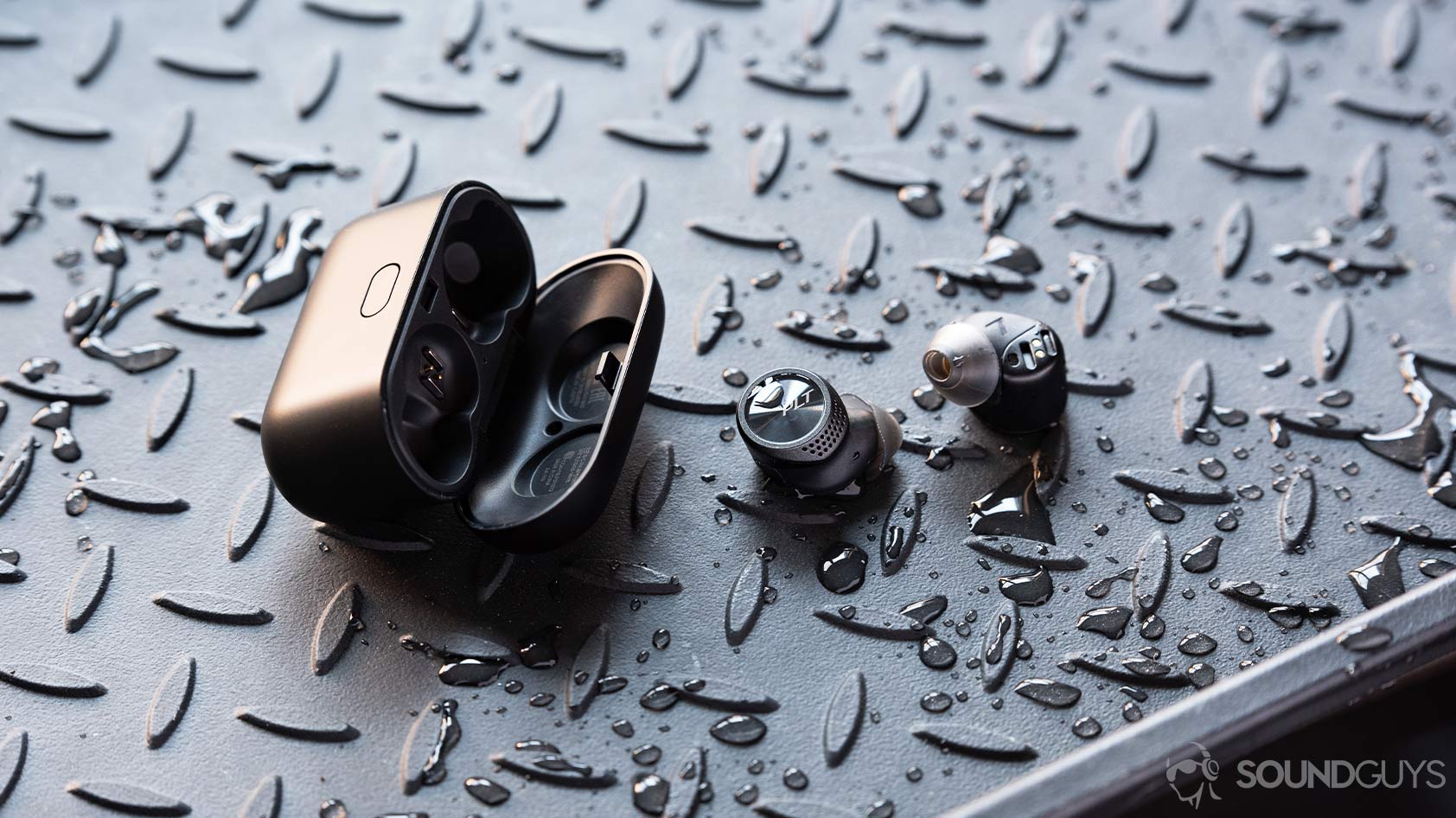
Plantronics BackBeat PRO 5100 review
Published onDecember 29, 2020
Plantronics BackBeat Pro 5100
Poly, formerly known as Plantronics, is a popular brand for professional use, but it’s elbowing its way into the workout market with the Plantronics BackBeat PRO 5100. These IP54-rated exercise earbuds are a pleasure to use in and out of the gym. For many $150 is difficult to justify, but the resilient build, solid battery life, and enjoyable sound quality lessen the financial strain.
Editor’s note: this article was updated on December 29, 2020, to reflect changes in pricing, to include additional information regarding sound quality, and to add a microphone poll.
Who should get the Plantronics BackBeat PRO 5100?

- Shoppers in search of durable earbuds will benefit from the tough build of these earbuds. The provided silicone ear tips seem unlikely to rip or tear with frequent use and, again, the IP54 rating is a necessity for anyone planning to take these out in the rain or to the beach.
- Athletes should think about bringing the BackBeat PRO 5100 to the gym this season: the earbuds are IP54 dust- and water-resistant, meaning they’re great for rock climbers, runners, crossfit goers, and more. The fit is comfortable and secure, ensuring that the ‘buds will remain stable throughout your workouts.
What is the Plantronics BackBeat PRO 5100 like?
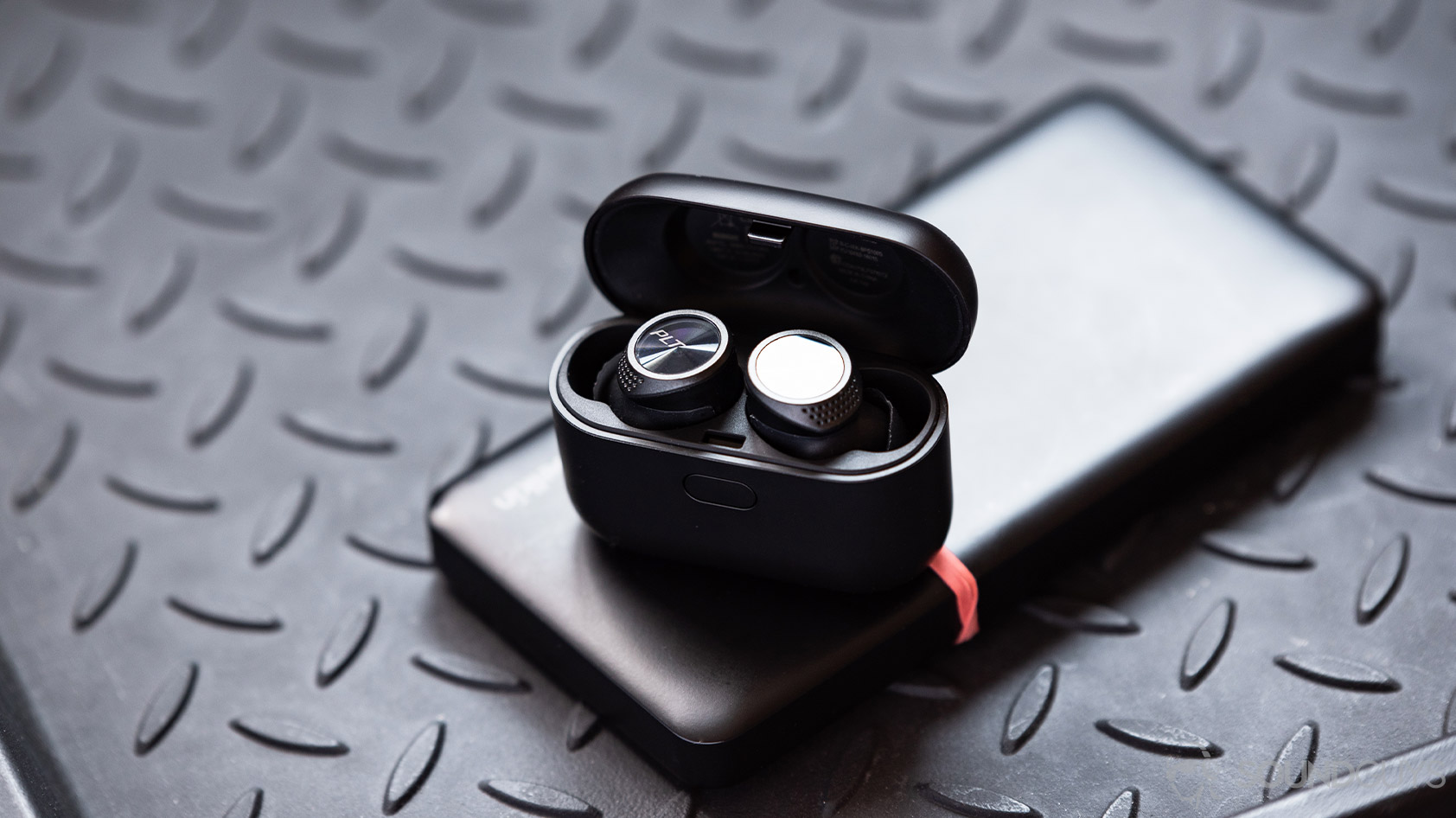
Plastic and silicone makeup these workout earbuds, which keeps costs down while retaining a tough exterior. The circular shape is compact and doesn’t create painful hotspots on the outer ear. Each earbud contains proximity sensors for auto play/pause, and they work consistently well. Gently sloping nozzles are angled for an ergonomic fit, which also serves to create a more comfortable seal to the ear canal.
The ear tips are made from soft silicone and rubberized plastic, the latter of which wraps around the base of either housing and clicks into place. When removing the ear tips, be sure to do so from the more structured silicone part, where the L or R is located, to avoid ripping the actual sleeve off.
Each earbud displays an inlaid button with the Plantronics “PLT” logo on it. The left side, however, also doubles as a capacitive touch interface. By tapping and holding the left surface, volume increases and a single tap decreases it. This can, however, be amended in the BackBeat app. The controls are remarkably comprehensive, rivaling those of JLab’s true wireless earbuds.
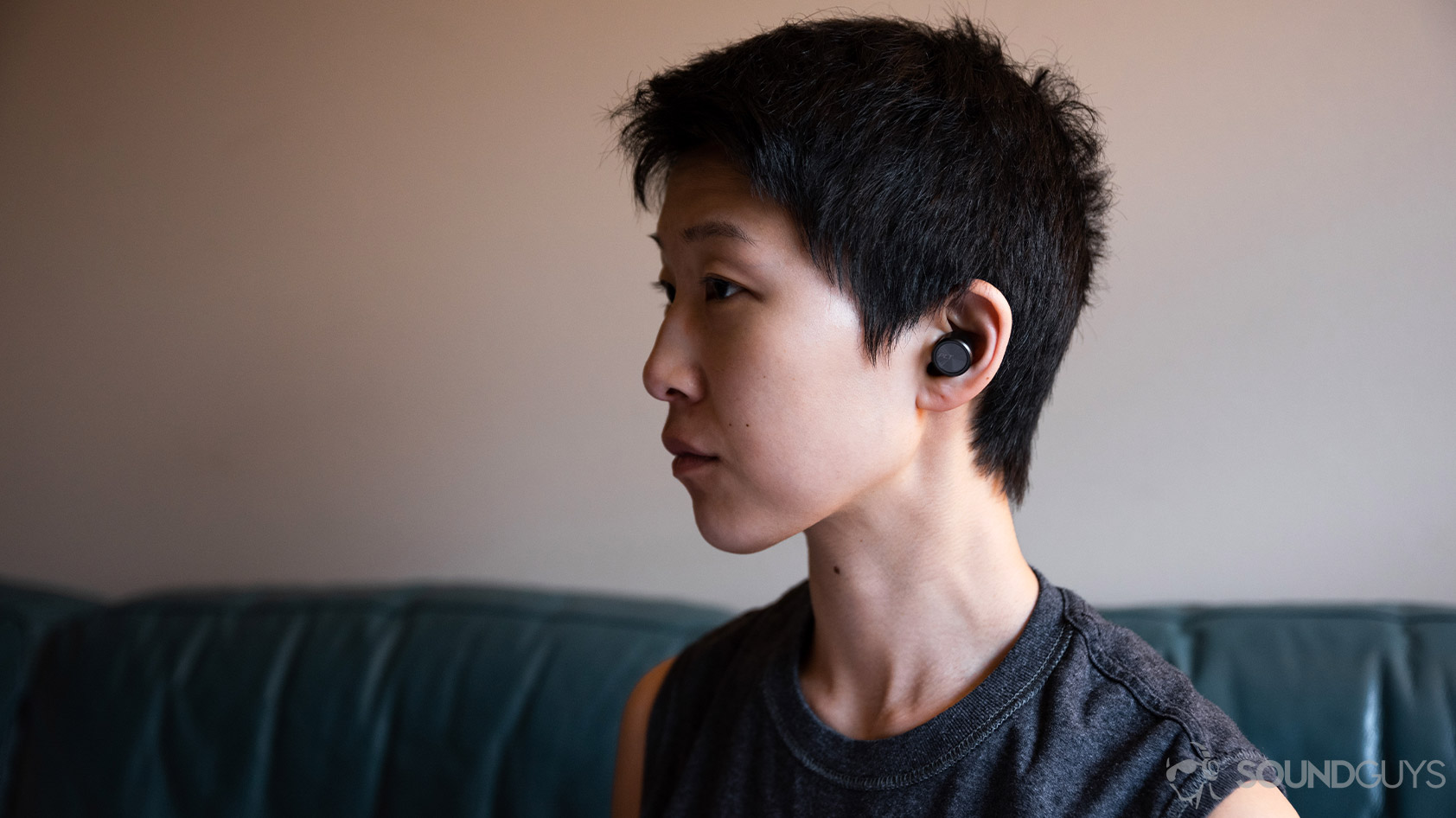
My one nitpick is pressing and holding for Google Assistant access. Sometimes, I would miss the tone notifying me to let go and say a command. This meant I continued to depress the button, but doing so for too long powers the earphones down. Suffice to say, there were multiple times when I meant to ask about the weather only to accidentally turn the BackBeat PRO 5100 off.
Advanced integrated controls make it easy to adjust playback without searching for your phone.
The included charging case is pretty standard: it’s a rounded rectangle with a button for opening the lid and a microUSB input at the bottom. Yes, I’m just as flummoxed by the microUSB input at this price point, but it’s not a dealbreaker for me yet.
Is the BackBeat app useful?
Like most applications accompanying wireless headphones, the BackBeat app is moderately useful. It gives a readout of remaining listening time, quick access to the user guide, the ability to remap on-board controls, and find my earbuds functionality. There are a few other settings to play around with, but none of them are particularly compelling.
The mobile app is a must-have for firmware updates, but you don't need to sink too much time into it.
I never revisited the app beyond my initial exploration of it, because there was never a reason to. There are neat features such as My Tap, which lets you assign your favorite Apple Music or Spotify playlist to a certain tap combination and more, but it felt more gimmicky than practical. Had it included an EQ adjustment setting, I may have used it more often.
Unless you’re particularly forgetful about where you place the earbuds, the app is frivolous. It is nice, though, for firmware updates. Just be sure to set aside about 10 minutes as that’s how long it took for the earbuds to update to version 15.0.
How do you connect the earbuds?
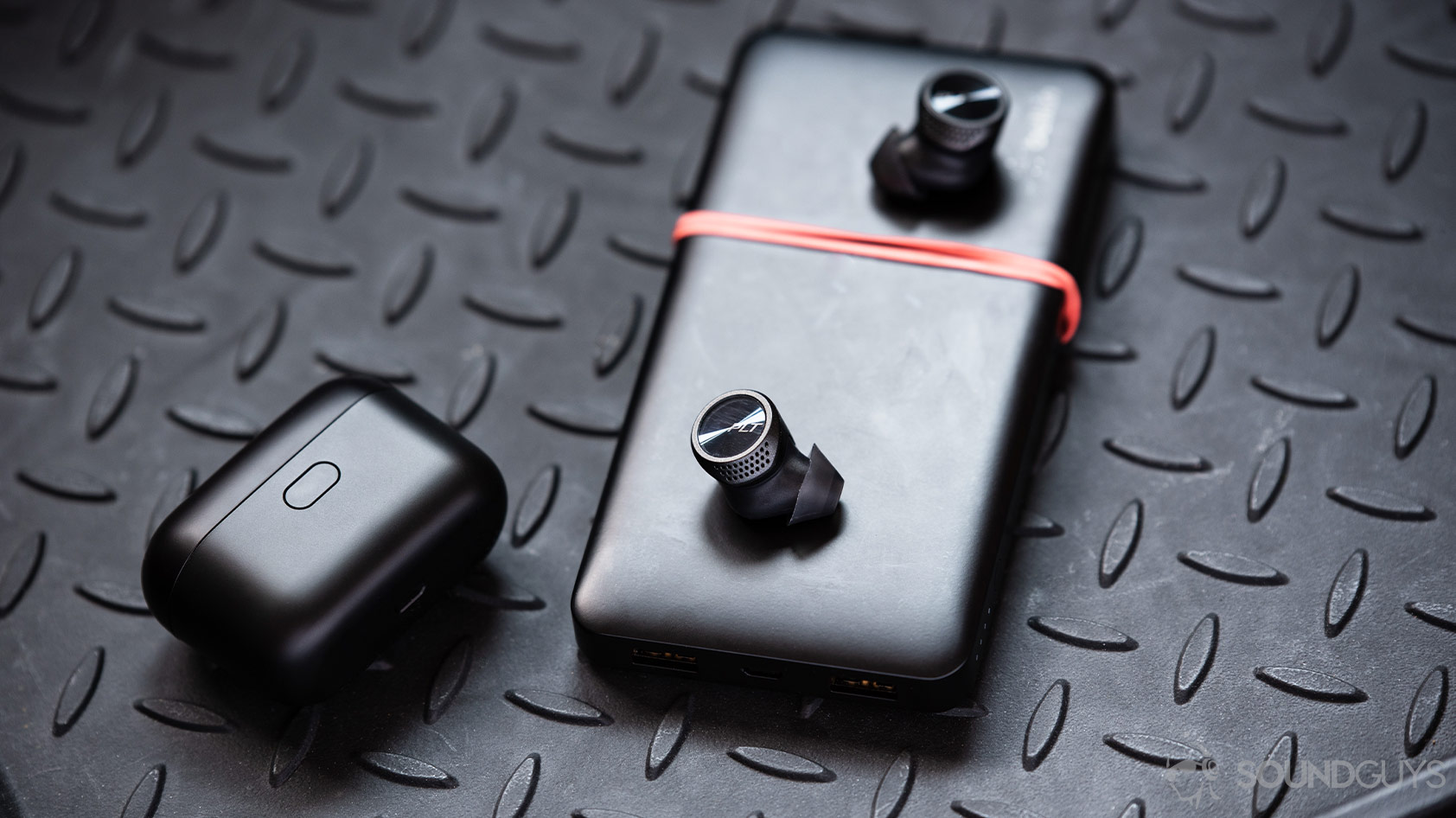
Our review unit had a bit of trouble with the initial pairing process. It should be simple: remove the earbuds from the case and they enter pairing mode. However, I had to go through a manual pairing process.
This isn’t much work—but it requires turning the earbuds off by holding each button for four seconds, then clicking and hold the right earbud button until you hear “pairing.” From there, click and hold the left earbud for two seconds until it powers on. The Plantronics BackBeat PRO 5100 should then be an available option in your phone’s Bluetooth menu.
The earbuds support AAC streaming, which benefits iPhone users but is hardly advantageous for Android users.
Once I was able to get both earbuds properly connected, I enjoyed untethered freedom within the designated 10-meter wireless range. Whether I was outside, in the gym, or in my apartment, I rarely experienced connection hiccups and avoided dropouts altogether. What’s more, the autoconnect feature works smoothly and hasn’t failed since the initial setup process.
The Bluetooth 5.0 earbuds support AAC but not aptX. This means that iPhone users benefit from high-quality wireless streaming, but Android users aren’t as AAC’s performance is unreliable outside of iOS. While this may seem like a huge knock against the workout earbuds, the fact is that many of us are unable to differentiate between codec qualities, especially if we’re not focusing on listening to music but rather using it as a tool to improve our workouts.
How good is the battery?
Battery life falls just shy of Plantronics’ 6.5-hour playtime; we measured 6 hours, 9 minutes of constant playback from the earbuds, which is above average for most true wireless earbuds. To recharge the ‘buds, just place them back in the case for two hours. If you’re short on time, pop the earbuds in for 10 minutes and enjoy up to an hour of listening. Assuming both the earbuds and case are completely drained, it takes three hours to complete a full charge cycle via the included microUSB cable.
It’s ridiculous that Plantronics didn’t pony up for a USB-C input, given the price of the BackBeat PRO 5100, but perhaps we’ll see it in the next generation. Outdated charging mechanism aside, the case supplies an additional two charges to the earbuds, affording you almost a full day of listening.
What does the Plantronics BackBeat PRO 5100 sound like?
The Plantronics BackBeat PRO 5100 have a surprisingly neutral-leaning frequency response. Bass notes are lightly emphasized over mids, making them sound about ½ times as loud as vocals. The peak from 400Hz-1.5kHz makes it easier to perceive detail from your music as that’s where you’ll find a lot of harmonic resonances from popular instruments (e.g. acoustic and electric guitars, piano, etc). Due to gentle emphasis within select frequency ranges, most music will sound good through the BackBeat PRO 5100. Of course, athletes may prefer more bass in which case, you’ll have to find a third-party EQ app because as of December 2019, the BackBeat app doesn’t support sound signature adjustments.
A gentle emphasis in the lows and mids adds clarity to the attack of drums, pianos, and stringed instruments.
Isolation performance is above average, the earbuds create a strong enough seal to passively block out some low-frequency noise. If you find yourself on an airplane, though, you’ll probably be inclined to increase the volume in order to filter out the plane’s engine. Please, don’t do that as noise-induced hearing loss is a real problem plaguing listeners. If you fly often enough, you may want to reconsider spending a bit more on noise canceling true wireless earbuds.
Lows, mids, and highs
Rainbow Kitten Surprise’s song Fail! begins with a bass progression alternating between the E, A, and D strings, a pattern that remains present throughout the song. Each note is easily differentiated from the next even as the piano enters at 0:10. Just a few moments later, a kick drum and synth is introduced to the mix. These competing frequencies make it harder to hear the leading bass picking, a consequence of auditory masking and drivers unable to separate certain frequencies.
How good is the microphone?
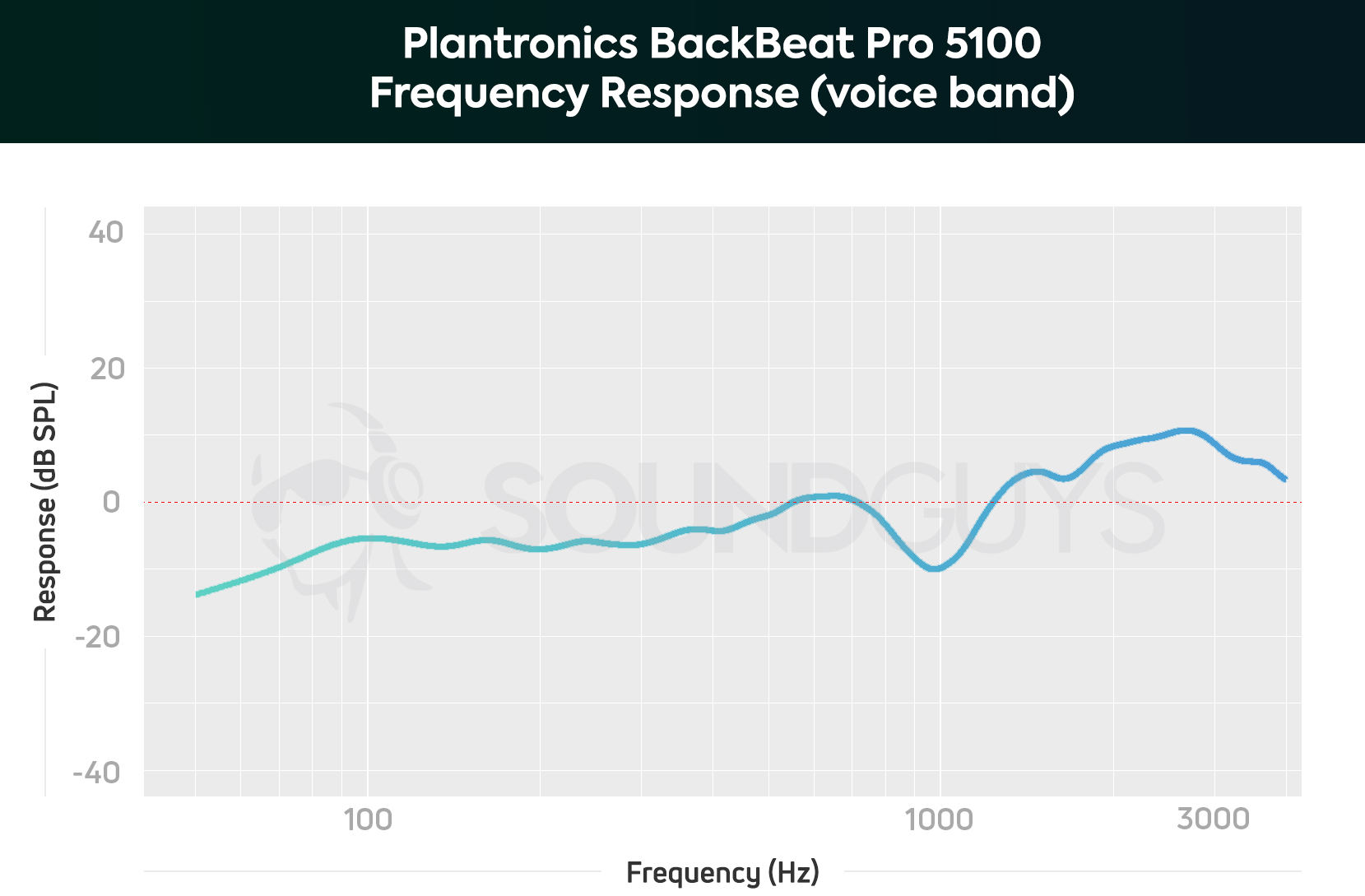
Users have reported unreliable microphone quality, but our provided review unit transmits voices well to the receiver on the other end of a call. Plantronics uses noise canceling technology to mitigate background noise, allowing the microphone array to pull focus directly to your voice as you speak. This isn’t nearly as effective as it is with the Apple AirPods Pro or Beats Powerbeats Pro; when I was outside, it sounded better to the person on the other end when I switched to my Samsung Galaxy S10e.
Plantronics BackBeat PRO 5100 microphone demo:
How does the microphone sound to you?
Should you buy the Plantronics BackBeat PRO 5100?

Yes, if you’re looking for durable earbuds that don’t necessarily scream “tough.” The BackBeat PRO 5100 are supremely comfortable and compact, a feat considering all of the hardware packed into the small housings. The initial pairing process was a bit annoying but hopefully an exception rather than a common occurrence. I enjoyed these earbuds for their on-board volume controls and solid battery life. They’re on the expensive side for workout earbuds, but rival household names like Jaybird and Bose when it comes to functionality.
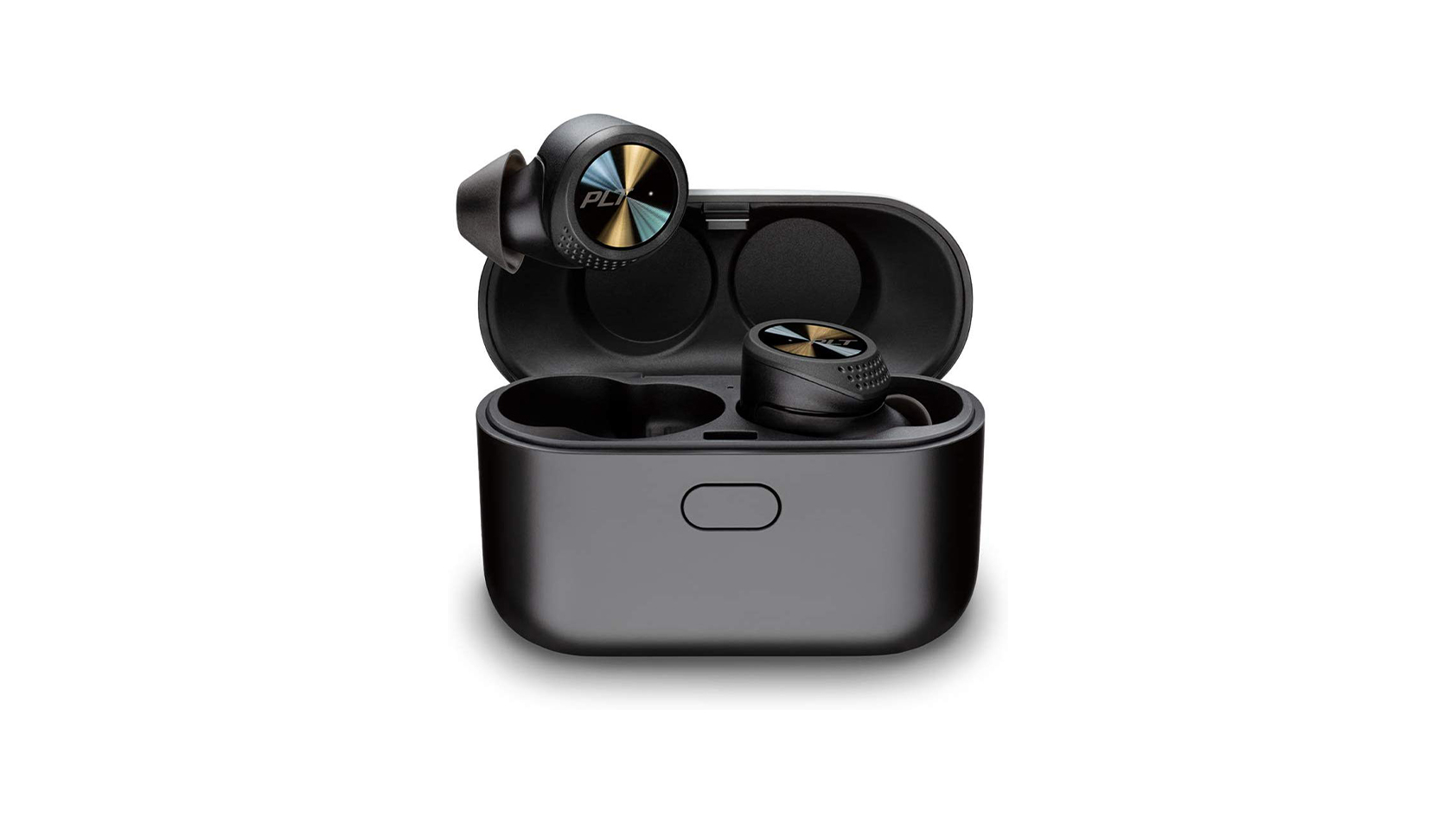
How do the Plantronics BackBeat PRO 5100 compare to other true wireless earbuds?
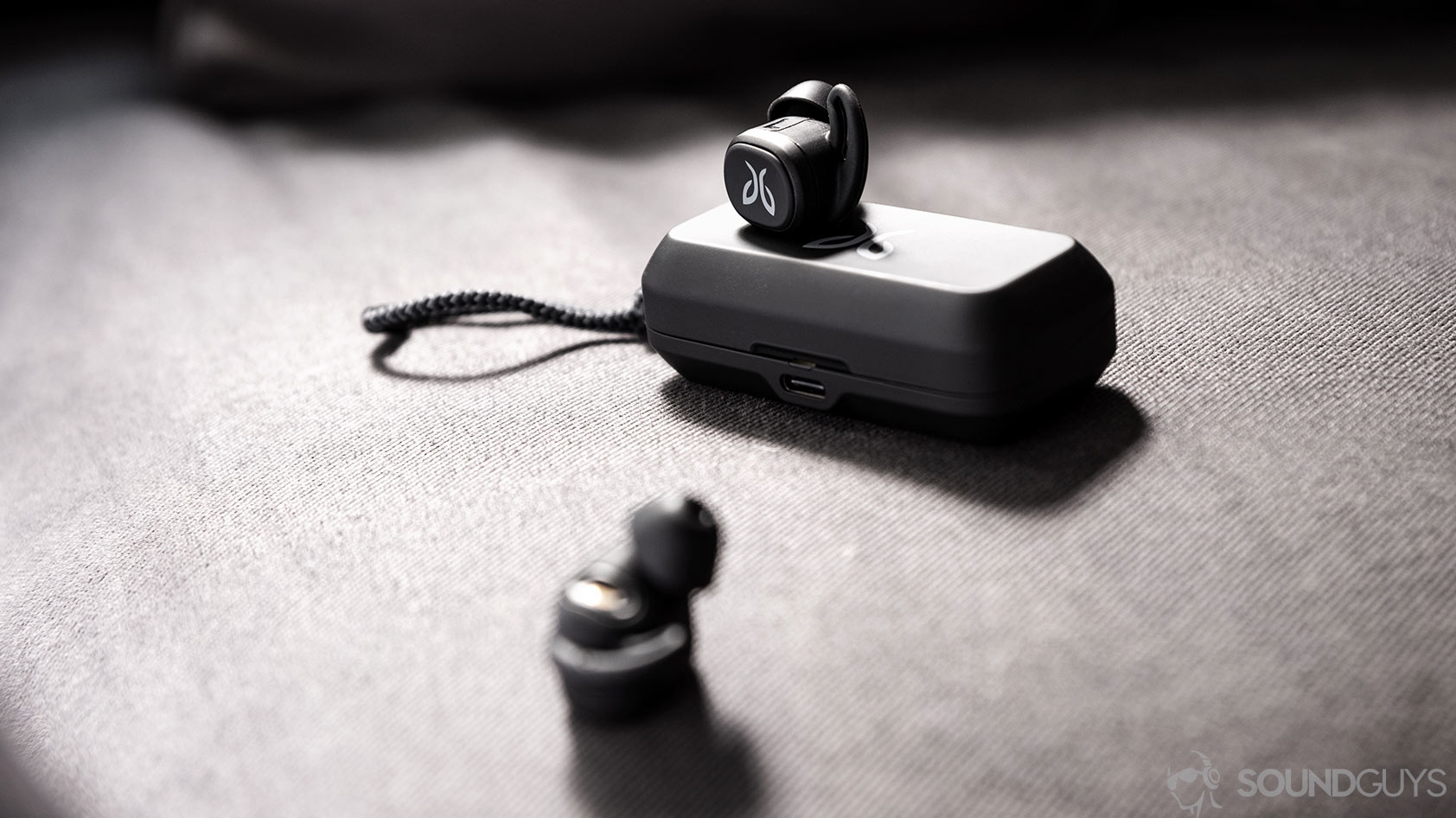
While Plantronics BackBeat PRO 5100 aren’t billed as workout earbuds, that’s reserved for the company’s FIT line of headsets, these are a great asset for any athlete. Comprehensive integrated controls give you plenty of freedom to command the earbuds without searching for your phone. Similar to the company’s ear hook workout earbuds, the BackBeat PRO 5100 is an unusually durable pair of earbuds. While they are fashionable, they don’t look quite as good as the Jaybird Vista but the fit is more comfortable for extended periods of time: I was able to rock climb with them for about two hours before feeling a hint of discomfort.
Related: Bose Sport Earbuds review
While I prefer the Jaybird Vista’s more svelte case and matte black aesthetic, the standalone battery life of the Plantronics BackBeat PRO 5100 is more useful. Though, I do wish the company used a USB-C input like its competitors, rather than microUSB but it’s a fairly minor gripe.
If you have more to spend, get the Beats Powerbeats Pro
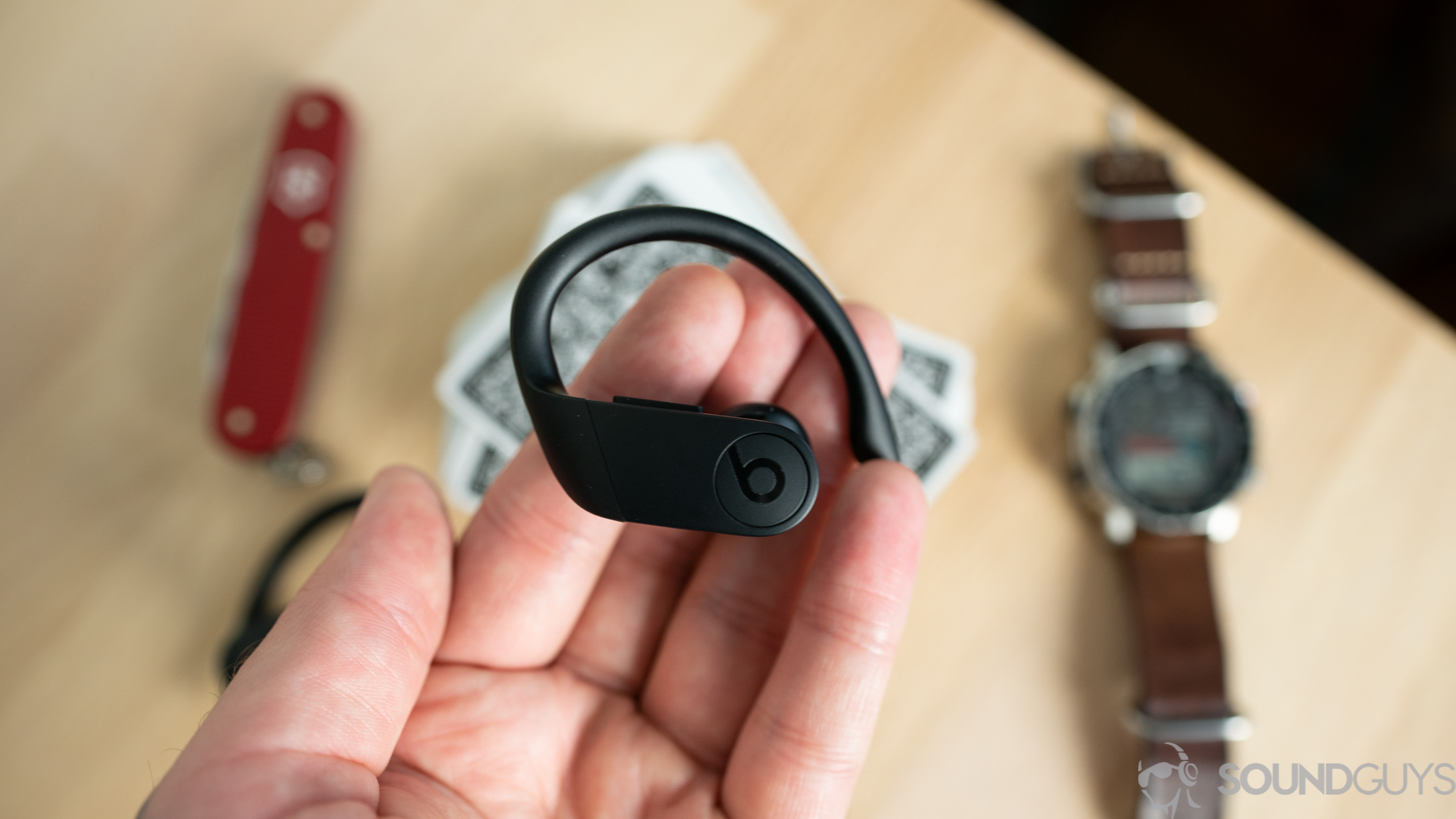
The Powerbeats Pro provide significantly better battery life, over 10 hours, feature a stabilizing ear hook design, and pair seamlessly with your smartphone, iPhones in particular. Sure, Beats’ earphones aren’t dust-resistant but that’s not a huge deal for most athletes. What’s more, the ear hooks will provide extra security for anyone who does extremely vigorous workouts. iPhone users will benefit from the Beats Powerbeats Pro’s H1 chip, the same one found in the Apple AirPods Pro.
The Samsung Galaxy Buds Plus provides better sound quality at a lower price
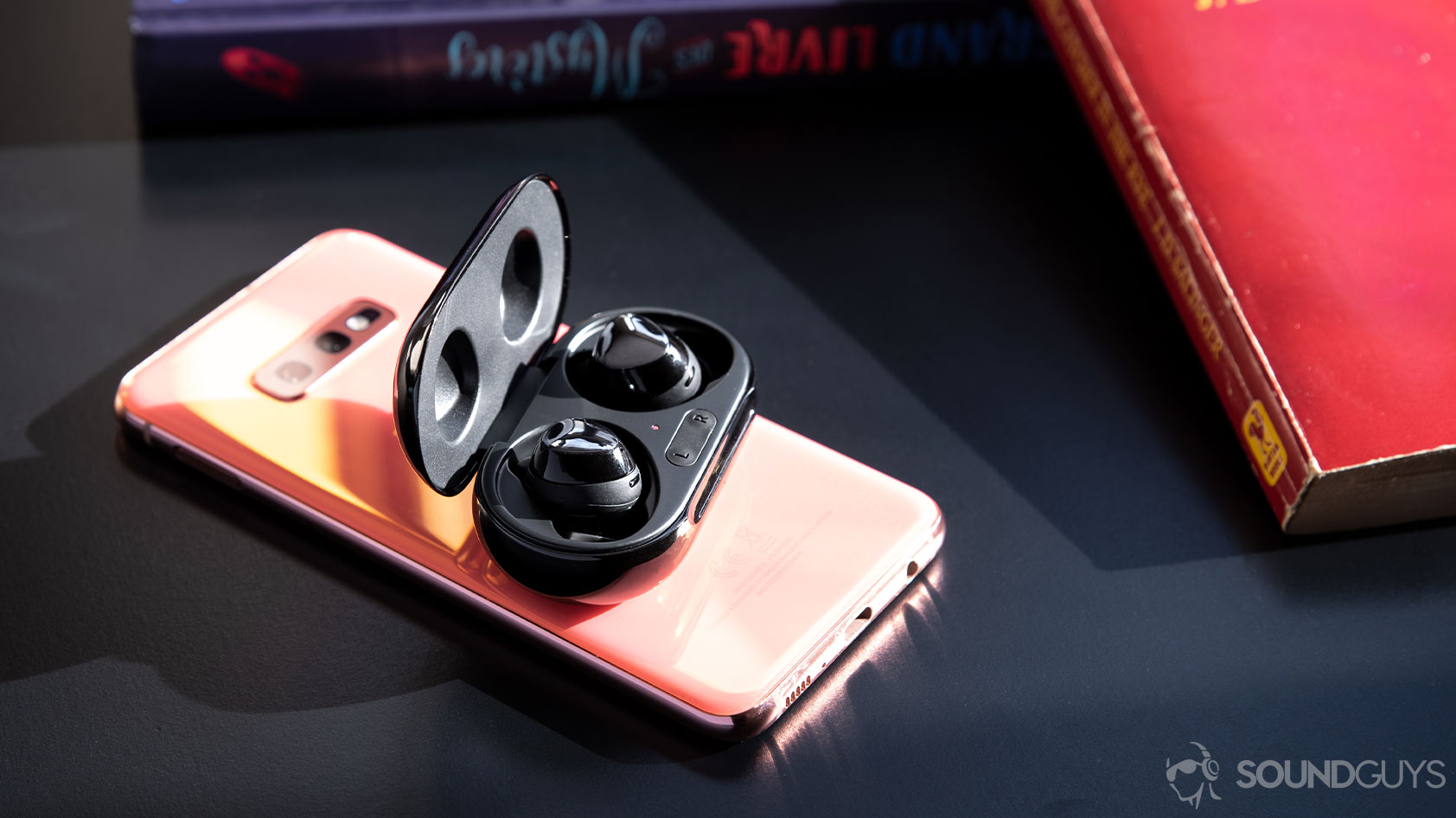
If you’re willing to sacrifice durability for sound quality, then the Samsung Galaxy Buds Plus should be on your radar. It may only have an IPX2 water resistance rating, however it offers support for Samsung’s Scalable Codec and AAC, ensuring a stable connection for iPhone and Samsung Galaxy device owners. In addition, the Galaxy Buds Plus also features a great-sounding microphone, and a Qi-Wireless charging case for added convenience. The cherry on top? The Galaxy Buds Plus is priced around $12 less than the BackBeat PRO 5100, which may appeal to budget-conscious consumers.
Frequently asked questions about the Plantronics BackBeat PRO 5100
The Plantronics BackBeat FIT 3100 are a pair of true wireless earbuds, equipped with an IP57 dust and water-resistance rating, and an ear loop designed to help keep your ear buds from falling off—perfect for intense training regimens. In comparison to the Plantronics BackBeat Pro 5100, these earbuds are less than half the price. However, the BackBeat FIT 3100 cut corners in terms of sound quality, which a significant over-emphasis in low frequency sounds. If you want to save money, the BackBeat FIT 3100 is definitely worth checking out. However, you should consider budget alternatives such as the JLab GO Air.
AAC is a more processor-intensive Bluetooth codec compared to other options such as SBC or aptX. On top of that, Android has yet to properly implement AAC encoding across all devices, which is due to various algorithms within the OS that interfere with processing the codec. For more information, check out Robert’s article which covers the issue in great detail.
It may sound ridiculous, but make sure you’re wearing your earbuds correctly. This is a common mistake for people who use true wireless earbuds—especially first-time users. The microphone on the Plantronics BackBeat PRO 5100 is located on the front of the left ear bud, meaning that if you wore it on the wrong ear, the microphone would be facing behind you. If you’re still encountering microphone quality issues, contact Poly’s Technical Assistance Center.
An IP rating, or Ingress Protection rating, refers to an industry-standard qualification system that determines how well a product is protected from water and dust. There are several different types of IP ratings that can be found in all sorts of consumer products–from earbuds to even Bluetooth speakers.